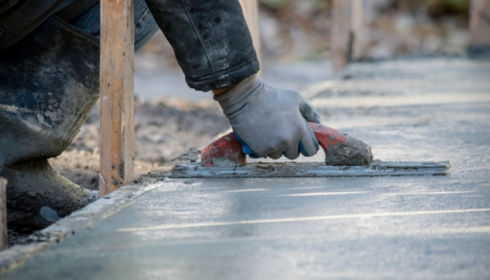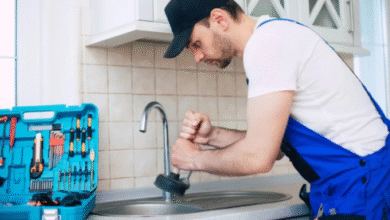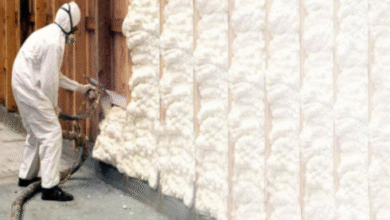When Concrete Cracks: The Art (and Necessity) of Flatwork and Repair

There’s something oddly satisfying about a clean stretch of freshly poured concrete. Smooth, flat, and flawless — like a blank canvas, just waiting to be used. Driveways, patios, walkways, basements — they all start here, don’t they? And yet, anyone who’s lived with concrete long enough knows the honeymoon doesn’t last forever. Cracks happen. Chips sneak in. Time and weather do their thing. That’s where the art of concrete flatwork and concrete repair comes in — not just a trade, but a kind of quiet craftsmanship that holds our foundations together.
Let’s not pretend concrete is glamorous. It’s not sleek like tile, or warm like wood. But it is the unsung hero beneath our feet — durable, low-maintenance, and endlessly versatile. And when done right, concrete flatwork doesn’t just serve a purpose; it elevates a space. Whether it’s a backyard patio that turns into the go-to spot for summer BBQs, or a crisp front walkway that quietly impresses every visitor — flatwork sets the tone.
So what exactly is flatwork? In short: it’s any horizontal surface made of poured concrete. Think sidewalks, garage floors, pool decks. But it’s more than just pouring and smoothing. Good flatwork involves proper grading, forming, reinforcement, finishing, and curing. Miss a step, and you’re flirting with puddles, cracks, and uneven surfaces down the road.
Now, there’s a bit of an art-meets-science thing going on with concrete. Pour too much water into the mix and you’ll get shrinkage cracks. Skip control joints and, well, let’s just say nature will create its own — and not in a neat, straight line either. Timing matters, too. Wait too long to finish and the surface starts setting. Rush it, and you trap bleed water that weakens the slab. It’s a dance. And the pros? They know the rhythm.
But let’s say the flatwork’s already in place — years old, a little tired. Maybe there’s a hairline crack running across the driveway, or a chunk missing from the patio edge. Maybe winter freeze-thaw cycles did a number on your sidewalk. Don’t worry, this doesn’t mean a full demolition is your only option.
That’s where concrete repair steps in. It’s a bit like patching up your favorite old jeans. Sure, you could throw them out and buy new ones. But sometimes, it’s smarter (and more satisfying) to fix what’s already there. And let’s be honest, concrete replacement isn’t cheap. Repair is often faster, more budget-friendly, and surprisingly effective — when done right.
Repairs can range from surface-level cosmetic fixes to structural crack injections. For example, hairline cracks might only need a flexible sealant or a skim coat. But deeper issues — like spalling or lifting — might require grinding, leveling, or even using epoxy or polyurethane to fill and bond fractured areas. And in some cases, a decorative overlay can refresh the entire surface, giving it a second life without a full tear-out.
Of course, not all damage is worth saving. Sometimes, the base has shifted, water is pooling underneath, or tree roots have done too much damage. In those cases, a professional might recommend tearing out and starting fresh. But again, that’s part of the value in hiring someone who understands the nuances — who knows when to salvage and when to start over.
And it’s not just about aesthetics or function. Poorly maintained concrete can be a safety hazard. Uneven surfaces can trip up guests. Cracks can lead to water infiltration, which in turn leads to more damage. A simple repair today might save you a much bigger headache — and cost — tomorrow.
So if you’re standing there staring at a cracked driveway, or a chipped patio edge, don’t write it off just yet. Get a second opinion. You might be surprised by what can be restored. There’s a quiet beauty in keeping things going. In preserving what’s already built. In patching, instead of replacing. That’s the heartbeat behind good concrete work.
And let’s not overlook one more thing: timing. Spring and early summer are prime seasons for concrete flatwork, concrete repair and everything in between. Materials cure better in mild temperatures, and there’s less chance of rain playing spoiler. Waiting too long? That’s a gamble — especially if you’re in an area where winter frost hits hard.
At the end of the day, concrete may seem like a set-it-and-forget-it material — but like anything worthwhile, it needs a little TLC. And if you find the right crew who knows their stuff — who respects the process and doesn’t cut corners — the results will speak for themselves.
Because whether you’re laying a brand-new slab or breathing life back into one that’s seen better days, there’s something quietly satisfying about seeing it done right. Flat, smooth, solid — ready for life to leave its mark.




